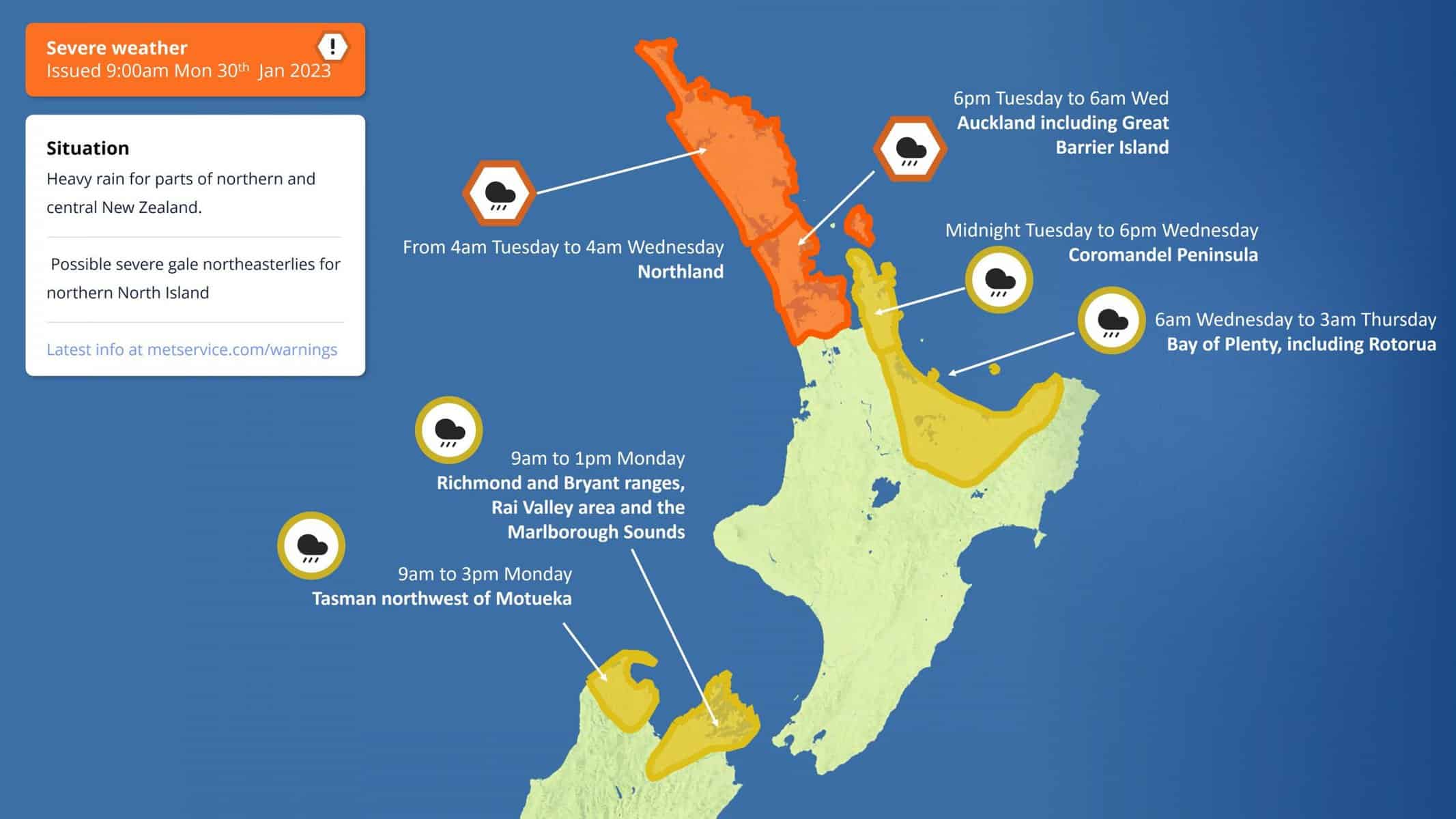Heavy rainfall hit New Zealand’s north island again on Sunday, causing landslides, flash floods and knocking out roads, with the death toll rising to four after a person who had been missing was confirmed dead.
Battered by rain since Friday, Auckland, New Zealand’s largest city of 1.6 million people, remained under a state of emergency.
The nation’s weather forecaster, MetService, warned of more severe weather on Sunday and Monday for the north island. Intense rainfall could also cause surface and flash flooding, it said.
“We know that there is potential for more adverse weather tonight,” Auckland Emergency Management controller Rachel Kelleher told reporters.
The emergency covers large swaths of the north island, with Waitomo district, about 220 kilometres from Auckland, declaring a state of emergency late on Saturday.
Police confirmed that a man missing after being swept away on Friday in Onewhero, a rural village about 70km south of Auckland, had died.
“The most horrific part of it is that we’ve lost lives,” Deputy Prime Minister Carmel Sepuloni told reporters in Auckland.
Up to 10 wagons of a freight train carrying logs derailed on Sunday morning after it travelled through a flooded section of track in the North Island’s Bay of Plenty region.
The two-person crew was uninjured in the derailment, which occurred in Te Puke.
Climate change is causing episodes of heavy rainfall to become more common and more intense in New Zealand, though the impact varies by region.
Climate Change Minister James Shaw noted the link to climate change on Saturday when he tweeted his support for those affected by flooding.
On Sunday, police said they were assisting with traffic management and road closures in that region after heavy rainfall “caused numerous slips, flooding and damage to roads”.
In nearby Bay of Plenty, there was also “widespread flooding”, police said, as well as a landslide that had knocked down a house and was threatening neighbouring properties.
Thousands of properties remained without power, while hundreds were without water, authorities said on Sunday.
The clean-up in Auckland began on Sunday after the city was hit with its wettest day ever recorded on Friday, according to weather agencies.
On Friday evening, more than 15 centimetres of rain fell in just three hours in some places.
Auckland Airport logged 249 millimetres in the 24 hours to 9am on Saturday, local time, beating the 1985 high of 161.8mm.
The same amount of rain that would typically fall over the entire summer hit in a single day.
People made more than 2,000 calls for assistance and 70 evacuations around Auckland due to the inundation, the New Zealand Herald reported on Saturday.
Prime Minister Chris Hipkins, less than a week in office, flew by helicopter over the city before touring flood-hit homes.
“The level of devastation in some areas is considerable,” Hipkins said, describing the event as “unprecedented” in recent memory.
“Our priority is to ensure that Aucklanders are safe, that they’re housed and that they have access to the essential services that they need.”
Daylight revealed the impact of the storm, caused by warm air descending from the tropics, sparking heavy rain and thunderstorms, said Auckland Emergency Management.
Of the three other people found dead, police said they found one man’s body in a flooded culvert and another in a flooded car park.
They said fire and emergency crews found a third body after a landslide brought down a house in the suburb of Remuera. Air New Zealand said the airline’s international flights in and out of Auckland would resume on Sunday, after domestic and international operations were closed due to weather on Friday.
